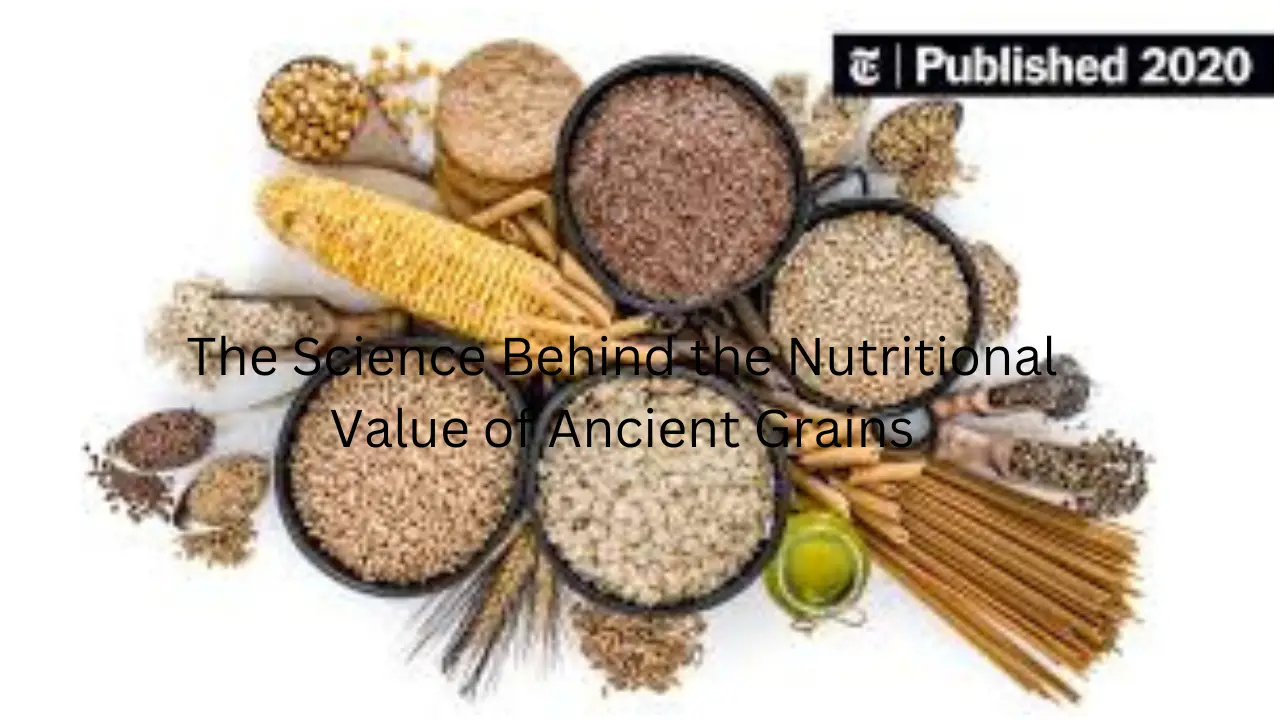
TIENBE Flying Insect Trap, 2 in 1 Indoor Plug-in Fruit Fly Trap, 1 Trap White and 6 Glue Cards, Fruit Fly Traps for Gnat, Moth, Mosquito, Suitable for Every Part of The Home
$11.99 (as of July 27, 2024 07:28 GMT +00:00 - More infoProduct prices and availability are accurate as of the date/time indicated and are subject to change. Any price and availability information displayed on [relevant Amazon Site(s), as applicable] at the time of purchase will apply to the purchase of this product.)The Science Behind the Nutritional Value of Ancient Grains
In the world of nutrition, ancient grains have emerged as nutritional powerhouses, revered for their rich nutrient profiles and potential health benefits. These time-honored grains, cultivated for centuries by various civilizations, offer a fascinating blend of essential nutrients that contribute to human well-being. In this article, we’ll delve into the science behind the nutritional value of ancient grains, exploring their composition and the potential impact they have on our health.
Introduction
Ancient grains are more than just dietary staples; they’re a treasure trove of nutrients that have sustained civilizations throughout history and continue to nourish us today.
The Nutrient-Rich Heritage
Ancient grains like quinoa, amaranth, and teff were cultivated by civilizations that valued the nourishment they provided. This legacy of nutrition is now backed by scientific research.
Ancient Grains: A Nutritional Breakdown
Ancient grains are diverse, but they often share common nutritional attributes that set them apart from modern grains:
Protein Powerhouses
Quinoa: Quinoa is a complete protein source, containing all essential amino acids. This makes it an excellent option for vegetarians and vegans.
Amaranth: Amaranth is rich in protein, particularly the amino acid lysine, which is limited in many grains.
Farro: Farro boasts a good protein content and offers a variety of essential amino acids.
Fiber: The Digestive Ally
Barley: Barley is abundant in soluble and insoluble fiber, supporting digestive health and regulating blood sugar.
Spelt: Spelt contains dietary fiber that aids digestion and contributes to a feeling of fullness.
Essential Vitamins and Minerals
Einkorn: Einkorn contains higher levels of some vitamins and minerals compared to modern wheat.
Teff: Teff is a notable source of iron, essential for oxygen transport in the body.
Millet: Millet is rich in magnesium, contributing to bone health and various metabolic processes.
Antioxidants and Phytochemicals
Quinoa: Quinoa contains quercetin and kaempferol, antioxidants with potential anti-inflammatory effects.
Amaranth: Amaranth contains unique phytochemicals with potential health benefits.
Gluten-Free Options
Many ancient grains, like amaranth, quinoa, and millet, are naturally gluten-free, providing safe alternatives for those with gluten sensitivities.
Health Benefits: From Heart Health to Digestion
Heart Health: The soluble fiber in ancient grains, such as beta-glucans in oats and barley, may help reduce cholesterol levels and support heart health.
Digestive Wellness: The fiber content of ancient grains supports regular digestion and prevents constipation.
Blood Sugar Regulation: The complex carbohydrates in ancient grains contribute to steady blood sugar levels.
Incorporating Ancient Grains into a Balanced Diet
- Breakfast: Start your day with a bowl of quinoa porridge topped with fruits and nuts.
- Lunch: Enjoy a farro and vegetable salad for a satisfying midday meal.
- Snack: Munch on air-popped amaranth bars for a nutritious snack.
- Dinner: Indulge in a millet and vegetable stir-fry for a hearty dinner.
The Future of Nutritional Research
As the interest in ancient grains grows, research continues to uncover their potential health benefits, guiding us toward informed dietary choices.
Conclusion
The science behind the nutritional value of ancient grains is a testament to their role as not just sustenance, but as sources of vitality. As we incorporate these grains into our diets, we embrace the wisdom of generations past and pave the way for a healthier future.
FAQs
- Are the nutrients in ancient grains superior to those in modern grains? Ancient grains often offer unique nutrient profiles and can provide certain nutrients in higher concentrations.
- Can ancient grains contribute to weight management? Yes, the fiber and protein content of ancient grains can contribute to feelings of fullness and help with weight management.
- Are there any allergies associated with ancient grains? While allergies to ancient grains are rare, it’s essential to be cautious if you have allergies to related grains.
- Can consuming ancient grains prevent chronic diseases? A diet rich in whole grains, including ancient grains, is associated with a reduced risk of chronic diseases like heart disease and diabetes.
- Are ancient grains suitable for athletes and active individuals? Yes, the protein, fiber, and complex carbohydrates in ancient grains can provide sustained energy for physical activities.





